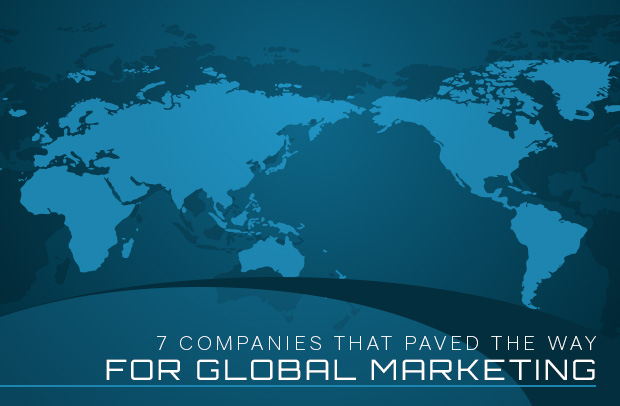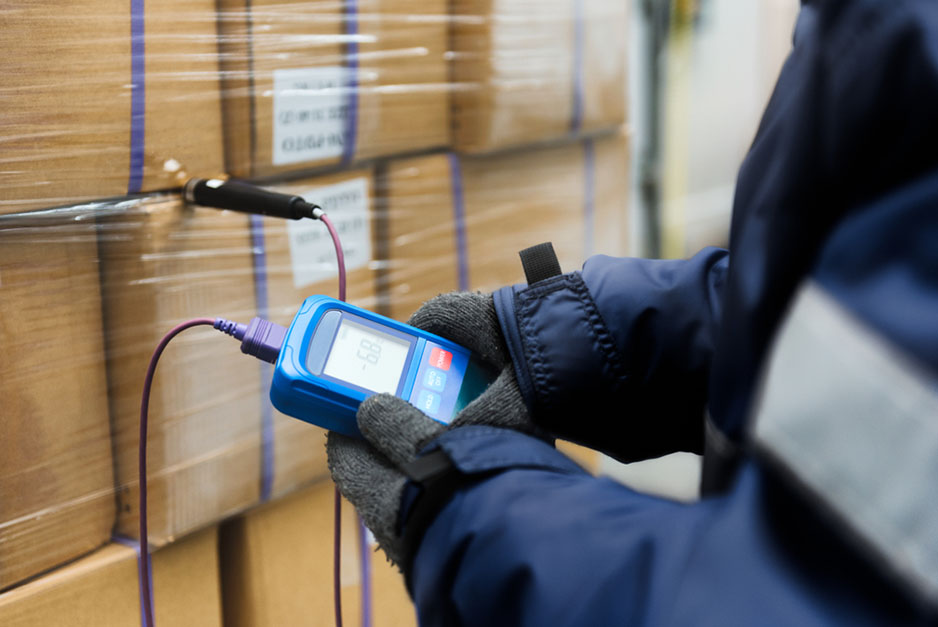It may seem perfectly normal today to see a sign for Coca-Cola or a Toyota vehicle when you travel abroad, but that hasn’t always been the case. Before instant communication was as simple as a phone call, email or text, global marketing was much more challenging. Only the largest corporations that could afford multiple manufacturing sites and distribution networks and had strong enough brand recognition to dominate across international borders were successful.
Global marketing is the ability to deliver a product or service to customers worldwide. If you want to succeed in boosting your marketing across borders and cultures, it takes careful planning. There have been epic fails and relatively few successes.
The ease of modern communications has had a dramatic impact on a company’s ability to market products worldwide. The extensive reach required to distribute and successfully sell a product around the world evolved slowly but shifted into overdrive with the advent of the internet.
Companies must adapt to a new language, update their brand message to the local culture, innovate with their menus, and dodge legal entanglements to create a global presence. It is a significant investment and carries potentially very high risk. The payoff can far outweigh the risk if the gamble is successful.

It’s worth the investment because access to a global market can dramatically expand the number of prospective customers. Additionally, being the first to move into the global space can be a huge advantage for companies in terms of market share and name recognition.
Global marketing can significantly reduce economic risk. Globally expanding your customer base can protect you against a currency crisis or region-specific recession. A slump, downturn, or natural disaster can all be mitigated by expansion into multiple markets.
Companies that have paved the way for newer, smaller contenders to tackle the challenging global environment have some elements in common. Typically, moving into the global space is more evolution, not a revolution. These successful global brands started by first shipping some of the manufacturing overseas.
Companies that already depend on global manufacturing have an advantage. These enterprises have already successfully navigated the legal systems and accounting issues associated with doing business in a particular place. These companies also have a geographic advantage with established contacts and experience with shipping goods through customs.
A critical component of success of producing goods worldwide is the development of clear goals and consistent business practices for meeting them in unfamiliar territory. The positive effect of going through the process of navigating a foreign economy and culture is that companies establish consistent and workable business practices for operations, manufacturing, and distribution.
Another common element of successful global expansion is that companies have a consistent and strong brand that isn’t tied to a single language.
Here are seven of the pioneers in global marketing that first took up the challenge of doing business globally.
Elevate Your Brand Awareness with Custom Corrugated Boxes
Boost Your Company’s Brand Awareness with Custom Corrugated Boxes
 The ability of any beverage company to impact a worldwide market cannot be understated. Changing tastes in drinking habits is not easy, as often what and even how a beverage is consumed is closely tied to culture. Coca-Cola is one of the most well-known examples of companies that successfully brought their brand global.
The ability of any beverage company to impact a worldwide market cannot be understated. Changing tastes in drinking habits is not easy, as often what and even how a beverage is consumed is closely tied to culture. Coca-Cola is one of the most well-known examples of companies that successfully brought their brand global.
A fundamental change in the business model in the first ten years was the opener for their big move around the world. Asa Candler envisioned Coca-Cola as a fountain drink. In fact, he valued the bottling business so little that he sold the bottling rights to three entrepreneurs for one dollar. Bottling operations enabled Coca-Cola to make and deliver a consistent product worldwide.
Branding the beverage with a uniquely identifiable bottle made it instantly recognizable. The see-through contour bottle and logo was something everyone could recognize, without being language dependent. Overseas production and bottling soared during World War II when troops could not get enough of the popular drink. After the war ended, the established bottling operations for our troops continued to produce and distribute the distinct product across Europe and Asia, further establishing the brand.
Coca-Cola did not expand again until the 1970s when the marketing department rolled out the “I’d Like to Buy the World a Coke” campaign which also featured their jingle, It’s the Real Thing. The jingle became a pop-culture phenomenon. Coke was able to leverage the recognizable features, the coke name and bottle packaging, to successfully market the product in various countries throughout the world where Coke had never been. The overall packaging and taste remained consistent, but the local operations were allowed leeway to adjust the taste within cultural preference parameters. The marketing department went to great lengths to adapt the advertising, promotions, distribution, and pricing to make it successful.

Another iconic company that expanded globally early was McDonald's. The key to the success of the fast-food giant was standardization. No matter which restaurant you entered, you knew you could expect a quality meal that always tasted the same at a decent price. McDonalds’ tightly-held distribution of supplies and strict standards of appearance created a rock-solid brand.
The golden arches and color scheme became something instantly associated with McDonald’s no matter where you went in the world. International expansion began in 1967; the company opened at least one store in every continent before the end of 1992.
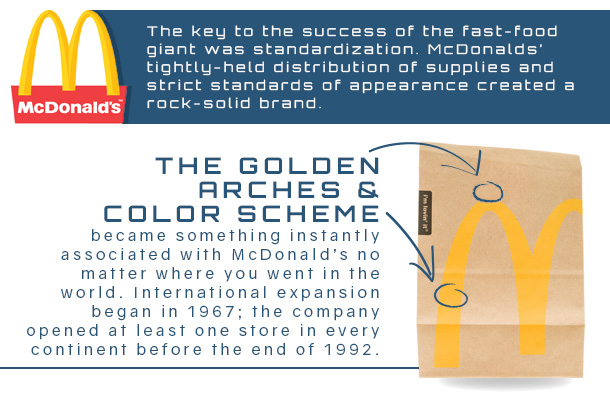
Like Coke, the fast food company balanced the strong brand and the standardized product by adapting locally. The overall franchise requirements remained consistent, but regional menu adjustments created a foothold in local markets. Marketers adapted the advertisements and promotions to reflect cultural and societal expectations, and pricing was adjusted to make it affordable. For example, in India, the Big Mac became the McAloo Tikka potato burger and is available for home delivery. Middle Eastern outlets carry a flatbread sandwich called the McArabia in addition to offering typical hamburger menu options. In most of Europe, ketchup is a separate menu item available for purchase and not included with the price of the meal.
This isn’t to say that it’s been smooth sailing. Regardless of the strong brand and marketing prowess, the company has been labeled as a symbol of overbearing American economics and has been banned from many countries and locations.

Another company that found early commercial success abroad was Dunkin Donuts. Similar to the McDonald’s model, the company embraced the strong visual symbol of the brand. The management team behind the international expansion created a detailed business plan, carefully researched and crafted to match the culture and eating habits in the target country.
Dunkin Donuts made a simple but key decision based on the product: The donut recipe remained consistent but local tastes should influence topping choices.
With a strong visual brand and business plan, Dunkin succeeded. In China, Dunkin Donuts serves dry pork and seaweed sprinkled donuts, and in Lebanon, the company produces a mango-chocolate donut.
Dunkin Donuts has more than 3,000 stores outside of the U.S., celebrating cultural differences while preserving its core product.

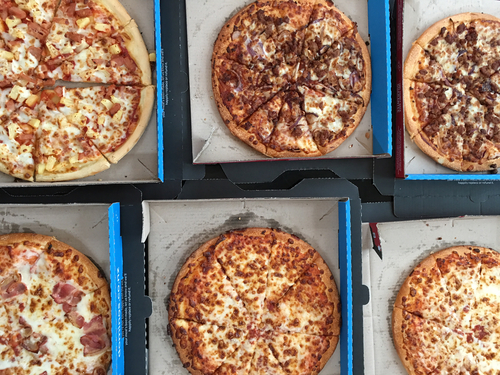
A strong brand, a core product, and an operationally-efficient headquarters all contributed to the success of the Domino’s expansion worldwide. The critical elements of consistent quality and a recognizable brand translated across language and cultural barriers with few changes.
Domino’s followed a similar strategy that Dunkin Donuts used. By defining their core product as bread, sauce, and cheese, the pizza company allowed the local franchise to use innovative toppings that accommodated local tastes. The marketing team focused on messaging and serving suggestions without adjusting the menu items constantly. Presenting seafood and fish options in Asia and curry in India, the company was also able to locally source all custom ingredients based on the geographical location.

The Danish toy maker leveraged strong company culture and a rock-solid brand to obtain the capital needed for expansion. The company remained centered on one of their core beliefs: Creativity and building are common to all children.
Expanding into America, exceptional U.S. sales drove the marketing team to deploy the same marketing and promotional concepts elsewhere. Lego quickly realized other countries reacted unfavorably to American-style bonus packs and gift promotions. It wasn’t until after the failure of some of the programs that the management team began to research the specifics of what consumer perceptions were in the target market and how to exploit them in Lego’s favor.
Like many successful global companies, Lego had a strong base product with long-term consumer loyalty. Parents who loved Lego as a child introduced their children to the popular toy.
The global popularity of the Lego Batman movies has helped boost the brand’s image and recognition across the globe.

The Oregon-based athletic company was one of the first American companies to outsource most of its manufacturing to Asia. The company was fortunate enough to have had early exposure to operating in foreign locales when they began importing Tiger Shoes (now called Asics). Tiger provided Nike with plenty of lessons learned and pitfalls to avoid, which helped the company in its nascent efforts to sell Nike overseas.
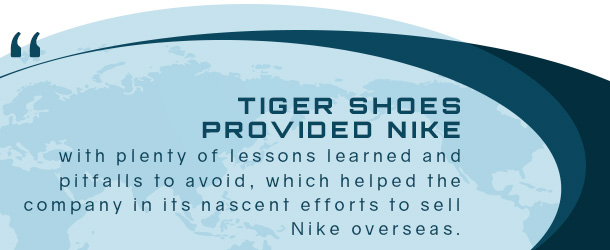
Like other successful global marketers, Nike had a visual logo that transcended language. Concentrating on using the logo rather than the name, Nike began by endorsing international athletes like Romanian tennis player Ilie Nastase, acclimatizing foreign populations to the Nike logo.
The company used these athlete endorsements as the primary marketing tool for global expansion. Nike broadened the company vision from running shoes and began to brand athletic wear with the Nike name. Choosing to endorse cricket, soccer, golf, and other smaller sports strengthened the brand, equated it with sports success, and ultimately provided name recognition in every sports venue around the world.

Sales of the Japanese-built cars began in North America in late 1957. This first international venture failed. With about 300 cars on the lot in Hollywood, Calif., the Japanese marketers realized their vehicle was underpowered and overpriced for the American market. The model was discontinued while marketers and designers returned to the drawing board.
Determined to give the market the product it wanted, Toyota designed the Corona specifically for American drivers. When released in 1965, the powerful engine, factory-installed air conditioning, and automatic transmission catapulted the company to the third best selling import brand in the U.S. The Japanese manufacturer established its brand as a high-quality, reliable vehicle with just the right creature comforts at just the right price.
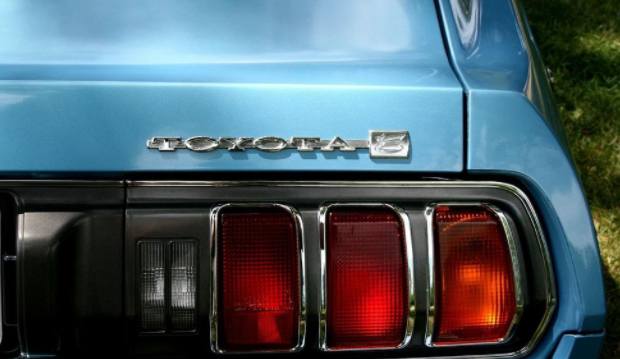
Using this same successful marketing strategy, the company continued to release carefully designed new models that catered to American tastes. By the time of the oil crisis in the 1970s, Toyota was well positioned in the North American market. Toyota already had small, fuel-efficient vehicles to sell to consumers who now paid significantly higher prices for fuel.
Realizing that this trend for smaller, more fuel-efficient cars would continue, Toyota acquired manufacturers like Hino Motors, Nippondenso, and Daihatsu Motor and folded them into the Toyota business model. By the end of the 1990s, the Japanese powerhouse had produced more than 100 million vehicles for export.
In a bid to compete with luxury brands BMW and Mercedes, Toyota marketed its brand of luxury by launching Lexus. Later, when the hybrid craze began, Toyota introduced the Prius, the world’s first mass-produced hybrid vehicle. Partnerships and acquisitions followed until 2008 when Toyota surpassed General Motors in vehicle production for the first time.
Like other successful models for global marketing, Toyota built a strong, recognizable brand and then customized it to meet local market needs. Using international manufacturing techniques backed by an uncompromising branding model, the company became the world’s best-selling car manufacturer.
Today, the lessons learned by these forerunners of global marketing, coupled with the instantaneous communications and visual reach of the internet, has helped many more companies successfully market their brand abroad.
Being successful requires experience in the international markets, a strong visual brand that crosses language barriers, strict business processes, and a flexible marketing team willing to adapt prices and promotions within regional markets.
Request a Quote for Shipping Containers Today!
Global marketing is the ability to deliver a product or service to customers worldwide. If you want to succeed in boosting your marketing across borders and cultures, it takes careful planning. There have been epic fails and relatively few successes.
The ease of modern communications has had a dramatic impact on a company’s ability to market products worldwide. The extensive reach required to distribute and successfully sell a product around the world evolved slowly but shifted into overdrive with the advent of the internet.
Benefits of Marketing Globally
Companies must adapt to a new language, update their brand message to the local culture, innovate with their menus, and dodge legal entanglements to create a global presence. It is a significant investment and carries potentially very high risk. The payoff can far outweigh the risk if the gamble is successful.

It’s worth the investment because access to a global market can dramatically expand the number of prospective customers. Additionally, being the first to move into the global space can be a huge advantage for companies in terms of market share and name recognition.
Global marketing can significantly reduce economic risk. Globally expanding your customer base can protect you against a currency crisis or region-specific recession. A slump, downturn, or natural disaster can all be mitigated by expansion into multiple markets.
Moving Production Offshore Is the First Step
Companies that have paved the way for newer, smaller contenders to tackle the challenging global environment have some elements in common. Typically, moving into the global space is more evolution, not a revolution. These successful global brands started by first shipping some of the manufacturing overseas.
Companies that already depend on global manufacturing have an advantage. These enterprises have already successfully navigated the legal systems and accounting issues associated with doing business in a particular place. These companies also have a geographic advantage with established contacts and experience with shipping goods through customs.
A critical component of success of producing goods worldwide is the development of clear goals and consistent business practices for meeting them in unfamiliar territory. The positive effect of going through the process of navigating a foreign economy and culture is that companies establish consistent and workable business practices for operations, manufacturing, and distribution.
Another common element of successful global expansion is that companies have a consistent and strong brand that isn’t tied to a single language.
Here are seven of the pioneers in global marketing that first took up the challenge of doing business globally.
Elevate Your Brand Awareness with Custom Corrugated Boxes
Boost Your Company’s Brand Awareness with Custom Corrugated Boxes
Seven Pioneers in Global Marketing
COCA-COLA
 The ability of any beverage company to impact a worldwide market cannot be understated. Changing tastes in drinking habits is not easy, as often what and even how a beverage is consumed is closely tied to culture. Coca-Cola is one of the most well-known examples of companies that successfully brought their brand global.
The ability of any beverage company to impact a worldwide market cannot be understated. Changing tastes in drinking habits is not easy, as often what and even how a beverage is consumed is closely tied to culture. Coca-Cola is one of the most well-known examples of companies that successfully brought their brand global. A fundamental change in the business model in the first ten years was the opener for their big move around the world. Asa Candler envisioned Coca-Cola as a fountain drink. In fact, he valued the bottling business so little that he sold the bottling rights to three entrepreneurs for one dollar. Bottling operations enabled Coca-Cola to make and deliver a consistent product worldwide.
Branding the beverage with a uniquely identifiable bottle made it instantly recognizable. The see-through contour bottle and logo was something everyone could recognize, without being language dependent. Overseas production and bottling soared during World War II when troops could not get enough of the popular drink. After the war ended, the established bottling operations for our troops continued to produce and distribute the distinct product across Europe and Asia, further establishing the brand.
Coca-Cola did not expand again until the 1970s when the marketing department rolled out the “I’d Like to Buy the World a Coke” campaign which also featured their jingle, It’s the Real Thing. The jingle became a pop-culture phenomenon. Coke was able to leverage the recognizable features, the coke name and bottle packaging, to successfully market the product in various countries throughout the world where Coke had never been. The overall packaging and taste remained consistent, but the local operations were allowed leeway to adjust the taste within cultural preference parameters. The marketing department went to great lengths to adapt the advertising, promotions, distribution, and pricing to make it successful.

MCDONALD’S
Another iconic company that expanded globally early was McDonald's. The key to the success of the fast-food giant was standardization. No matter which restaurant you entered, you knew you could expect a quality meal that always tasted the same at a decent price. McDonalds’ tightly-held distribution of supplies and strict standards of appearance created a rock-solid brand.
The golden arches and color scheme became something instantly associated with McDonald’s no matter where you went in the world. International expansion began in 1967; the company opened at least one store in every continent before the end of 1992.

Like Coke, the fast food company balanced the strong brand and the standardized product by adapting locally. The overall franchise requirements remained consistent, but regional menu adjustments created a foothold in local markets. Marketers adapted the advertisements and promotions to reflect cultural and societal expectations, and pricing was adjusted to make it affordable. For example, in India, the Big Mac became the McAloo Tikka potato burger and is available for home delivery. Middle Eastern outlets carry a flatbread sandwich called the McArabia in addition to offering typical hamburger menu options. In most of Europe, ketchup is a separate menu item available for purchase and not included with the price of the meal.
This isn’t to say that it’s been smooth sailing. Regardless of the strong brand and marketing prowess, the company has been labeled as a symbol of overbearing American economics and has been banned from many countries and locations.

DUNKIN DONUTS
Another company that found early commercial success abroad was Dunkin Donuts. Similar to the McDonald’s model, the company embraced the strong visual symbol of the brand. The management team behind the international expansion created a detailed business plan, carefully researched and crafted to match the culture and eating habits in the target country.
Dunkin Donuts made a simple but key decision based on the product: The donut recipe remained consistent but local tastes should influence topping choices.
With a strong visual brand and business plan, Dunkin succeeded. In China, Dunkin Donuts serves dry pork and seaweed sprinkled donuts, and in Lebanon, the company produces a mango-chocolate donut.
Dunkin Donuts has more than 3,000 stores outside of the U.S., celebrating cultural differences while preserving its core product.

DOMINO’S

A strong brand, a core product, and an operationally-efficient headquarters all contributed to the success of the Domino’s expansion worldwide. The critical elements of consistent quality and a recognizable brand translated across language and cultural barriers with few changes.
Domino’s followed a similar strategy that Dunkin Donuts used. By defining their core product as bread, sauce, and cheese, the pizza company allowed the local franchise to use innovative toppings that accommodated local tastes. The marketing team focused on messaging and serving suggestions without adjusting the menu items constantly. Presenting seafood and fish options in Asia and curry in India, the company was also able to locally source all custom ingredients based on the geographical location.

LEGO
The Danish toy maker leveraged strong company culture and a rock-solid brand to obtain the capital needed for expansion. The company remained centered on one of their core beliefs: Creativity and building are common to all children.
Expanding into America, exceptional U.S. sales drove the marketing team to deploy the same marketing and promotional concepts elsewhere. Lego quickly realized other countries reacted unfavorably to American-style bonus packs and gift promotions. It wasn’t until after the failure of some of the programs that the management team began to research the specifics of what consumer perceptions were in the target market and how to exploit them in Lego’s favor.
Like many successful global companies, Lego had a strong base product with long-term consumer loyalty. Parents who loved Lego as a child introduced their children to the popular toy.
The global popularity of the Lego Batman movies has helped boost the brand’s image and recognition across the globe.

NIKE
The Oregon-based athletic company was one of the first American companies to outsource most of its manufacturing to Asia. The company was fortunate enough to have had early exposure to operating in foreign locales when they began importing Tiger Shoes (now called Asics). Tiger provided Nike with plenty of lessons learned and pitfalls to avoid, which helped the company in its nascent efforts to sell Nike overseas.

Like other successful global marketers, Nike had a visual logo that transcended language. Concentrating on using the logo rather than the name, Nike began by endorsing international athletes like Romanian tennis player Ilie Nastase, acclimatizing foreign populations to the Nike logo.
The company used these athlete endorsements as the primary marketing tool for global expansion. Nike broadened the company vision from running shoes and began to brand athletic wear with the Nike name. Choosing to endorse cricket, soccer, golf, and other smaller sports strengthened the brand, equated it with sports success, and ultimately provided name recognition in every sports venue around the world.

TOYOTA
Sales of the Japanese-built cars began in North America in late 1957. This first international venture failed. With about 300 cars on the lot in Hollywood, Calif., the Japanese marketers realized their vehicle was underpowered and overpriced for the American market. The model was discontinued while marketers and designers returned to the drawing board.
Determined to give the market the product it wanted, Toyota designed the Corona specifically for American drivers. When released in 1965, the powerful engine, factory-installed air conditioning, and automatic transmission catapulted the company to the third best selling import brand in the U.S. The Japanese manufacturer established its brand as a high-quality, reliable vehicle with just the right creature comforts at just the right price.

Using this same successful marketing strategy, the company continued to release carefully designed new models that catered to American tastes. By the time of the oil crisis in the 1970s, Toyota was well positioned in the North American market. Toyota already had small, fuel-efficient vehicles to sell to consumers who now paid significantly higher prices for fuel.
Realizing that this trend for smaller, more fuel-efficient cars would continue, Toyota acquired manufacturers like Hino Motors, Nippondenso, and Daihatsu Motor and folded them into the Toyota business model. By the end of the 1990s, the Japanese powerhouse had produced more than 100 million vehicles for export.
In a bid to compete with luxury brands BMW and Mercedes, Toyota marketed its brand of luxury by launching Lexus. Later, when the hybrid craze began, Toyota introduced the Prius, the world’s first mass-produced hybrid vehicle. Partnerships and acquisitions followed until 2008 when Toyota surpassed General Motors in vehicle production for the first time.
Like other successful models for global marketing, Toyota built a strong, recognizable brand and then customized it to meet local market needs. Using international manufacturing techniques backed by an uncompromising branding model, the company became the world’s best-selling car manufacturer.
Conclusion
Today, the lessons learned by these forerunners of global marketing, coupled with the instantaneous communications and visual reach of the internet, has helped many more companies successfully market their brand abroad.
Being successful requires experience in the international markets, a strong visual brand that crosses language barriers, strict business processes, and a flexible marketing team willing to adapt prices and promotions within regional markets.
Request a Quote for Shipping Containers Today!

